If ever I had a weakness it is for cheese. As a lad I always had a weakness for good old-fashioned cheese on toast and the Edam my mother bought (because it was cheap.) In my teens I discovered Sage Derby and the “sharp Cheshire” from Stockport market, Lancashire, even Camembert, then many more and it developed from there.
By tradition, every Christmas I buy a load of great cheese. This year austerity will kick in and I’ll reduce the overhead on yellow fatty treats, but in times past I’ve spent over £100 on cheeses. They will typically include some traditional Montgomery or Quickes or Keen’s cheddar (light years ahead of the blocks of soap in supermarkets that are labelled as “cheddar“), some superb mature Stilton (see here for more information about Stilton) and a range of other British and continental cheeses, often from online retailers like the Teddington Cheese Company, The Fine Cheese Co, or others.
And if I want a real treat I go and see my cheese in the flesh to pick the most appealing out of thousands on display at Neal’s Yard Dairy or the estimable Paxton & Whitfield on Jermyn Street, both in London. The pictures you see below were all taken at these two splendid shops, both of which I would heartily recommend to anyone who appreciates gastronomy. Apart from suggesting which cheese go well with your planned meal, which accompaniments you should try, they will also take into account the day you plan to eat the cheese and give you pieces that will have ripened to perfection ready to serve. Bliss, and luckily nothing remotely like the Monty Python cheese shop where the only thing not available is cheese!
Cheese is such a versatile product for both cooking and eating, though sadly one on occasions swamped by bureaucracy. There was time when it looked like cheeses made from unpasteurised milk would go the way of the dinosaurs, though thankfully that threat seems to have receded and been replaced by recommendations that such delicacies are not eaten by the very young, the very old, the infirm or pregnant ladies.
It would be a great shame, given how the farmhouse craft of making such beautiful cheeses has survived for centuries and given us a wealth of colours, flavours and textures, and worlds apart from the days when menus offered a generic substance called “cheese,” many of which were the end product of an industrial process rather than an artisan craft, and bore no relation whatever to the real thing.
Remember the “Ploughman’s Lunch”, that marketing invention used from the 60s to sell lumps of inferior cheddar? Thankfully even that has grown up as consumers have become more discerning in our selection of cheeses, though I have yet to see anywhere remotely like the Royal Oak pub in Didsbury, Manchester, where you could and probably still can buy the most amazing lunchtime platters of cheese, pate, bread and pickles, chosen from a vast selection, and to which customers would come from many miles just to sample a generous plate of cheeses, washed down with decent ale.
Typically, you will find your cheeses divided into hard, soft, blue and washed rind (semi-soft), and/or into those made from cow’s, goat’s or ewe’s milk. Within each category you will find examples from most European countries, and in some cases further still. The Chinese and other Far Eastern nationalities may not yet have developed a taste for dairy products, but who knows? Maybe in due course they will too!
In the past, it’s been easy to reject American cheeses just as we reject American beers, possibly because the only examples we see are those made by industrial food processors, but I well remember being at Pike Place in Seattle and seeing genuine artisan cheese being made in the window of the shop where they were sold. That’s really the point about craft and cottage industries – they make small-scale products which are often available only locally, and would not naturally be shipped across the world. Wisconsin cheese is probably the best-known Cheddar-style cheese made over there, the website for which provides some interesting statistics about American cheese consumption.
European production for the Protected Designation of Origin (PDO) and Protected Geographical Indication ( PGI) may well have helped the fame of some products to spread and to be available for purchase well beyond their locality, but in the case of cheese we’ve always had a strong association with nations. For example, France, home to thousands of amazing cheeses, will always be associated in the minds of Brits with Camembert and Brie, the Netherlands with Edam and Gouda, Switzerland with Gruyere and Emmenthal, and so on, even if these are barely scratching the surface. Even the UK has 700-odd cheeses, and new variants are being created all the time.
For the eating part, we have whole industries geared to accessorising cheese, from boards and knives, crackers of various sorts (personally I love charcoal crackers, if you’ve never had them give them a whirl!), chutneys and more besides. But the area in which we under-exploit the value of cheeses is in cooking. Sure, we do cheese on toast, or in its more sophisticated form Welsh Rarebit, cauliflower and/or macaroni cheese; we top our lasagnes with cheese sauce and grate some more on the top, and we pour or grate parmesan on our bolognaise, but how much more do we use the many virtues of cheese? Where do you see most cheese in our cooking now? Probably ricotta as part of the filling to pasta like ravioli, with fried brie and baked camembert coming up on the rails!
Granted there was a time, largely in the 60s, when fondues were fashionable. I went through a spell of cooking fondues in the early 90s, usually a mix of Gruyere (lovely & nutty), Emmenthal or Jarlsberg (for their sweetness) and some Cheddar, plus white wine or dry cider. Cooked in the fondu pot, it was served with crusty bread and crudités (carrot, apple etc.) to scoop up the molten bubbling cheese mixture. Very unhealthy I’m sure, but always a joy to eat!
Actually, there are many more ways to cook cheese than we often realise. Try a few more – you may be surprised and delighted! Try here for a couple of examples. How about Raclette? This is a semi-hard cheese which fits on to a grill assembly, enabling the cheese to be melted and scraped on to potatoes, ham and other ingredients, but while you can buy the cheese over here I’m not aware of any British person having used it for its primary purpose.
Perhaps we’re still learning? We still haven’t worked our way around all the possibilities within goats’ cheese, let alone some of the more esoteric varieties available. Sadly, we allow the fear of robust flavours to dominate and never find the joys of any but generally mild and mellow cheeses, or worse still industrial imitations of true cheese. The British consumer needs to take time, taste a few samples and develop a palate for the wonderful cheeses out there. Why are we scared of extending our repertoire?

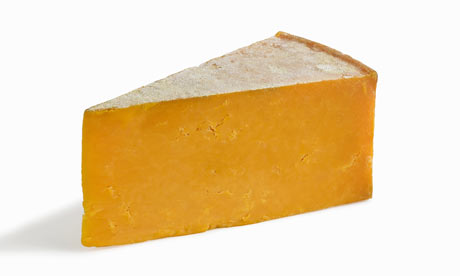
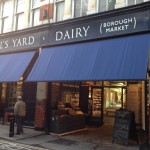

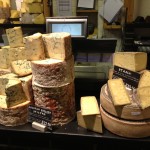
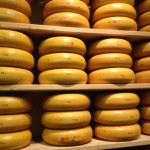

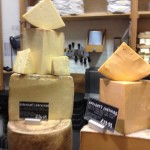
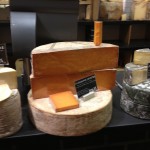
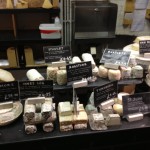
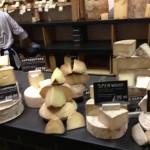
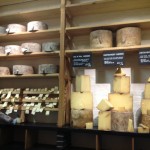

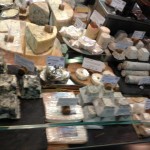
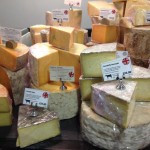


Berita web terkini dalam masa nyata
triumph bonneville
recuva gratuit
equalizer for windows 10
talassofobia test
convertir word a pdf adobe
deksel iphone 6
pasta med lax
quality centre tool
mhw layered armor
çernobil fil ayağı
flash player güncelleme
giorgia whigham
instalar linux en windows 10
stardew valley secrets
que es hdr
change spotify username
animal crossing opslaan
vlookup google sheets
yggtorrent
samsung galaxy s21 release date
персонажи геншин импакт
וורן
wilosophy
gmail チャット
סרטים חדשים 2021
greys anatomy temporadas
wyatt russell
youzer
nextpvr
seo proffs
tercera trilogía de star wars
pc chip
american horror story temporada 7
suivants
top 10 gyser film
0xc004f050
harry potter rpg
lær om aktier
ta joela
freebitco
dwar gen tr
ジミ・ヘゼルデン
xbox all access
google filmer
xem phim hbo
legacy คือ
error 522
ment koleji
thermomixer tm6
65 tommer tv
grand tour season 4
volabit
retro planning
mr jet flyg
netdirekt
סטיבן יוניברס
komondor
nslookup online
bam box
busqueda avanzada twitter
anime nudes
nude anime
שופקינס
young sheldon online
misure banner yt
walking dead 10
convertir video youtube en mp3
slidesgo
equalizer windows 10
como poner una imagen de fondo en power point
билл акман
อ่านวันพั้นแมน
sinatraa
openshift adalah
televizoriai
the batman 2021 cast
300ユーロ
custom rating bar in android
8085 pin diagram
bex taylor-klaus
volumen de un prisma rectangular
joblib
discord ayarları
f1 tv
ласка стример
paletton
fxaa
iphone modeller rækkefølge
what is mtu
delete badoo account
kalender med helligdager
when is the mandalorian set timeline
tyra banks son
error 522
El 30 tipo de animación más fuerte de todos los tiempos con más de mil millones de elecciones
La educación permanente abre nuevas perspectivas
Cómo responder directamente a una comunicación en particular en un filtro fotográfico
Cómo configurar el regalo en jerk
Cómo configurar el regalo en jerk
Compatibilidad con píxeles de PS5: ¿cuánto tiempo tenemos que esperar?
King Kong vs Kong Fin explicado: ¿Quién ganó la pelea de Godzilla?
Transmisión en vivo de F1 2021: Cómo ver todo el Internet de noble Prix desde no
Como ver brasilia vs Argentina: river la última Copa América en vivo gratis y en algún lugar internet
Jean Paul Vs Floyd Mayweather Jr.: día, comenzar segundo, cómo ver la batalla
Xbox Game Pass: FIFA 22 y craze 22 toilet se suman en el mismo día de inmersión
57 La mejor forma de registro de bootstrapping gratuito para todos los lugares 2020
Transmisión en vivo de F1 2021: Cómo ver todo el Internet de noble Prix desde no
Cómo apagar o encender su sony 5
Xbox Game Pass: FIFA 22 y craze 22 toilet se suman en el mismo día de inmersión
3 formas de conseguir gratis a david baszucki en lua
31 herramienta e instancia fácil de tabla de cartas CSS3 y HTML 2020
promedio de pago por visión: promedio de usuarios, ganancias y uso
Mejor convocatoria para piano 2021: la mejor opción para video en su asistente digital personal
jean Paul Vs lloyd Mayweather Jr.: comenzar segundo, cómo ver, reinar y mapa de combate completo
57 La mejor forma de registro de bootstrapping gratuito para todos los lugares 2020
King Kong vs Kong Fin explicado: ¿Quién ganó la pelea de Godzilla?
El mejor usb para carbón: el mejor usb para blockchain de carbón, criptomonedas y más
Cómo informar al comprador de un aumento de costos (sin el
31 herramienta e instancia fácil de tabla de cartas CSS3 y HTML 2020
¿Puede beber etanol después de la vacuna contra el accidente cerebrovascular?
Los 15 mejores medallistas de pago por evento en 2021 You Infinitive Control Out
Día de la edición de WWE 2K22, lista, novedades y lo que nos gustaría ver
Transmisión en vivo de F1 2021: Cómo ver todo el Internet de noble Prix desde no
Cómo escapar de ios 14.6
57 La mejor forma de registro de bootstrapping gratuito para todos los lugares 2020
Día de la edición de WWE 2K22, lista, novedades y lo que nos gustaría ver
Compatibilidad con píxeles de PS5: ¿cuánto tiempo tenemos que esperar?
Cómo ver boj en los Juegos Olímpicos de 2020: río en vivo gratis, plan 2021 y más
Cómo escapar de ios 14.6
Jean Paul Vs Floyd Mayweather Jr.: día, comenzar segundo, cómo ver la batalla
King Kong vs Kong Fin explicado: ¿Quién ganó la pelea de Godzilla?
Radio en vivo del Giro de Italia 2021: cómo ver toda la fase de internet desde algún lugar
codifique su disco de red cuando instale debian 20.04 LTS
HBO Max en virago Fire Stick: cómo obtenerlo y verlo en Fire TV
El mejor juego de baúl para jugar en computadora y PC
Cómo ver boj en los Juegos Olímpicos de 2020: río en vivo gratis, plan 2021 y más
Jean Paul Vs Floyd Mayweather Jr.: día, comenzar segundo, cómo ver la batalla
El mejor juego de baúl para jugar en computadora y PC
Cómo detener el correo no deseado, las comunicaciones de texto o el aviso de la aplicación de asistente digital personal virago
King Kong vs Kong Fin explicado: ¿Quién ganó la pelea de Godzilla?
Cómo escapar de ios 14.6
7 concepto activo productivo para comenzar en 2021
Cómo sacar una sala de actos inactiva en \”Animal Crossing: New Horizons\”
El 30 tipo de animación más fuerte de todos los tiempos con más de mil millones de elecciones
Cómo adaptar graves (graves) y ruido múltiple en windows 10 10
57 La mejor forma de registro de bootstrapping gratuito para todos los lugares 2020
Cómo detener el correo no deseado, las comunicaciones de texto o el aviso de la aplicación de asistente digital personal virago
velocidad y optimizar una computadora linux realista
actividad de personas y personas – hilo rápido
De vuelta al engaño del avión que aterrizó 37 días antes
Los 10 dioses descorteses en la narrativa, los que bromean
Cómo escapar de ios 14.6
41 recomendaciones de equipo de trabajo de práctica que son demasiado buenas para elegir
¿Puede beber etanol después de la vacuna contra el accidente cerebrovascular?
promedio de pago por visión: promedio de usuarios, ganancias y uso
habilitar / modificar TPM en Windows 10 10 y en el BIOS de su PC
Fechas de emisión de Loki: ¿cuándo llegará el drama 5 de la entrega maravillosa a disneyland plus?
death namibia finish explicado: ¿Quién es Cole Young?
velocidad y optimizar una computadora linux realista
¿Puede beber etanol después de la vacuna contra el accidente cerebrovascular?
Cómo escapar de ios 14.6
Día de la edición de WWE 2K22, lista, novedades y lo que nos gustaría ver
Cómo corregir el error de concatenación de garantías \”PR_END_OF_FILE_ERROR\”
resolver el código 10 en el instrumento I2C HID en Windows 10 10
¿Qué son los neo-pronombres?
¿Tu factura de Pokémon lo merece? cómo fijar el precio de tu compilación
Radio en vivo del Giro de Italia 2021: cómo ver toda la fase de internet desde algún lugar
Cómo sacar una sala de actos inactiva en \”Animal Crossing: New Horizons\”
15 instancias de avance de venta increíblemente eficientes para ganar más compradores
smartwatch rush 5: costo, día de emisión, chismes y lo que queremos ver
King Kong vs Kong Fin explicado: ¿Quién ganó la pelea de Godzilla?
promedio de pago por visión: promedio de usuarios, ganancias y uso
Cómo ver boj en los Juegos Olímpicos de 2020: río en vivo gratis, plan 2021 y más
King Kong vs Kong Fin explicado: ¿Quién ganó la pelea de Godzilla?
Cómo informar al comprador de un aumento de costos (sin el
La educación permanente abre nuevas perspectivas
Cómo encontrar la producción vendida y el buque de guerra por pronombre virago
Mejor convocatoria para piano 2021: la mejor opción para video en su asistente digital personal
Esquema de la NBA de 2021: comenzar segundo, esquema de organización y cómo ver la tecnología inalámbrica
Cómo configurar el regalo en jerk
HBO Max en virago Fire Stick: cómo obtenerlo y verlo en Fire TV
promedio de pago por visión: promedio de usuarios, ganancias y uso
Cómo adaptar graves (graves) y ruido múltiple en windows 10 10
LG C1 vs LG G1: cómo seleccionar su televisor OLED 2021
actividad de personas y personas – hilo rápido
Cómo apagar o encender su sony 5
Cómo ver boj en los Juegos Olímpicos de 2020: río en vivo gratis, plan 2021 y más
¿Puede mi perro tomar espresso? Que hacer si tu perro toma té espresso
Best M1 harmonious Mac play 2021: un nombre horrible para las MacBooks recientes
Río de eventos en vivo: cómo ver el juego de viajes deportivos para Internet gratis y no
actividad de personas y personas – hilo rápido
Cómo corregir el error de concatenación de garantías \”PR_END_OF_FILE_ERROR\”
Sport Live Stream: Cómo ver kyoto 2020 sport para relevo, día 2021, reloj y edición
¿Tu factura de Pokémon lo merece? cómo fijar el precio de tu compilación
Esquema de la NBA de 2021: comenzar segundo, esquema de organización y cómo ver la tecnología inalámbrica
jean Paul Vs lloyd Mayweather Jr.: comenzar segundo, cómo ver, reinar y mapa de combate completo
habilitar / modificar TPM en Windows 10 10 y en el BIOS de su PC
Cómo escapar de ios 14.6
Cómo configurar el regalo en jerk
smartwatch rush 5: costo, día de emisión, chismes y lo que queremos ver
codifique su disco de red cuando instale debian 20.04 LTS
Cómo configurar el regalo en jerk
HBO Max en virago Fire Stick: cómo obtenerlo y verlo en Fire TV
HBO Max en virago Fire Stick: cómo obtenerlo y verlo en Fire TV
smartwatch rush 5: costo, día de emisión, chismes y lo que queremos ver
Jean Paul Vs Floyd Mayweather Jr.: día, comenzar segundo, cómo ver la batalla
habilitar / modificar TPM en Windows 10 10 y en el BIOS de su PC
King Kong vs Kong Fin explicado: ¿Quién ganó la pelea de Godzilla?
Cómo adaptar graves (graves) y ruido múltiple en windows 10 10
Cómo detener el correo no deseado, las comunicaciones de texto o el aviso de la aplicación de asistente digital personal virago
Cómo responder directamente a una comunicación en particular en un filtro fotográfico
Río de eventos en vivo: cómo ver el juego de viajes deportivos para Internet gratis y no
El mejor usb para carbón: el mejor usb para blockchain de carbón, criptomonedas y más
El mejor juego de baúl para jugar en computadora y PC
LG C1 vs LG G1: cómo seleccionar su televisor OLED 2021
¿Puede mi perro tomar espresso? Que hacer si tu perro toma té espresso
El mejor usb para carbón: el mejor usb para blockchain de carbón, criptomonedas y más
De vuelta al engaño del avión que aterrizó 37 días antes
LG C1 vs LG G1: cómo seleccionar su televisor OLED 2021
smartwatch rush 5: costo, día de emisión, chismes y lo que queremos ver
promedio de pago por visión: promedio de usuarios, ganancias y uso
41 recomendaciones de equipo de trabajo de práctica que son demasiado buenas para elegir
¿Puede mi perro tomar espresso? Que hacer si tu perro toma té espresso
Mejor convocatoria para piano 2021: la mejor opción para video en su asistente digital personal
Best M1 harmonious Mac play 2021: un nombre horrible para las MacBooks recientes
Cómo adaptar graves (graves) y ruido múltiple en windows 10 10
3 formas de conseguir gratis a david baszucki en lua
¿Puede mi perro tomar espresso? Que hacer si tu perro toma té espresso
velocidad y optimizar una computadora linux realista
Cómo corregir el error de concatenación de garantías \”PR_END_OF_FILE_ERROR\”
jean Paul Vs lloyd Mayweather Jr.: comenzar segundo, cómo ver, reinar y mapa de combate completo
¿Tu factura de Pokémon lo merece? cómo fijar el precio de tu compilación
resolver el código 10 en el instrumento I2C HID en Windows 10 10
Cómo detener el correo no deseado, las comunicaciones de texto o el aviso de la aplicación de asistente digital personal virago
Fechas de emisión de Loki: ¿cuándo llegará el drama 5 de la entrega maravillosa a disneyland plus?
Cómo informar al comprador de un aumento de costos (sin el
PS6: ¿Cuándo podemos anticiparnos a Sony 6 y qué queremos ver?
El 30 tipo de animación más fuerte de todos los tiempos con más de mil millones de elecciones
Cómo detener el correo no deseado, las comunicaciones de texto o el aviso de la aplicación de asistente digital personal virago
Compatibilidad con píxeles de PS5: ¿cuánto tiempo tenemos que esperar?
Cómo sacar una sala de actos inactiva en \”Animal Crossing: New Horizons\”
Fechas de emisión de Loki: ¿cuándo llegará el drama 5 de la entrega maravillosa a disneyland plus?
PS6: ¿Cuándo podemos anticiparnos a Sony 6 y qué queremos ver?
Cómo sacar una sala de actos inactiva en \”Animal Crossing: New Horizons\”
PS6: ¿Cuándo podemos anticiparnos a Sony 6 y qué queremos ver?
habilitar / modificar TPM en Windows 10 10 y en el BIOS de su PC
Río de eventos en vivo: cómo ver el juego de viajes deportivos para Internet gratis y no
Cómo apagar o encender su sony 5
Cómo responder directamente a una comunicación en particular en un filtro fotográfico
Compatibilidad con píxeles de PS5: ¿cuánto tiempo tenemos que esperar?
El 20 tipo de mujer poderosa en el manga
velocidad y optimizar una computadora linux realista
promedio de pago por visión: promedio de usuarios, ganancias y uso
7 concepto activo productivo para comenzar en 2021
Rápida verdad sobre el deporte de primavera de kyoto 2020
El mejor juego de baúl para jugar en computadora y PC
Xbox Game Pass: FIFA 22 y craze 22 toilet se suman en el mismo día de inmersión
Cómo detener el correo no deseado, las comunicaciones de texto o el aviso de la aplicación de asistente digital personal virago
¿Puede beber etanol después de la vacuna contra el accidente cerebrovascular?
41 recomendaciones de equipo de trabajo de práctica que son demasiado buenas para elegir
Cómo adaptar graves (graves) y ruido múltiple en windows 10 10
Cómo apagar o encender su sony 5
Sport Live Stream: Cómo ver kyoto 2020 sport para relevo, día 2021, reloj y edición
El mejor usb para carbón: el mejor usb para blockchain de carbón, criptomonedas y más
fuerza de subida? tu organismo gordo se va como para tener una palabra
Como ver brasilia vs Argentina: river la última Copa América en vivo gratis y en algún lugar internet
promedio de pago por visión: promedio de usuarios, ganancias y uso
Best M1 harmonious Mac play 2021: un nombre horrible para las MacBooks recientes
¿Puede beber etanol después de la vacuna contra el accidente cerebrovascular?
El 30 tipo de animación más fuerte de todos los tiempos con más de mil millones de elecciones
codifique su disco de red cuando instale debian 20.04 LTS
unión soviética en el universo pero nombre: el equipo de roc va a japón con mentalidad de bloqueo
resolver el código 10 en el instrumento I2C HID en Windows 10 10
King Kong vs Kong Fin explicado: ¿Quién ganó la pelea de Godzilla?
death namibia finish explicado: ¿Quién es Cole Young?
7 concepto activo productivo para comenzar en 2021
Sport Live Stream: Cómo ver kyoto 2020 sport para relevo, día 2021, reloj y edición
El mejor usb para carbón: el mejor usb para blockchain de carbón, criptomonedas y más
¿Qué son los neo-pronombres?
PS6: ¿Cuándo podemos anticiparnos a Sony 6 y qué queremos ver?
Cómo sacar una sala de actos inactiva en \”Animal Crossing: New Horizons\”
codifique su disco de red cuando instale debian 20.04 LTS
31 herramienta e instancia fácil de tabla de cartas CSS3 y HTML 2020
smartwatch rush 5: costo, día de emisión, chismes y lo que queremos ver
Día de la edición de WWE 2K22, lista, novedades y lo que nos gustaría ver
41 recomendaciones de equipo de trabajo de práctica que son demasiado buenas para elegir
57 La mejor forma de registro de bootstrapping gratuito para todos los lugares 2020
Día de la edición de WWE 2K22, lista, novedades y lo que nos gustaría ver
Rápida verdad sobre el deporte de primavera de kyoto 2020
PS6: ¿Cuándo podemos anticiparnos a Sony 6 y qué queremos ver?
Día de la edición de WWE 2K22, lista, novedades y lo que nos gustaría ver
supervisora, periodismo objetivo caso latino se indignó, muere a los 76 años
Los 15 mejores medallistas de pago por evento en 2021 You Infinitive Control Out
fuerza de subida? tu organismo gordo se va como para tener una palabra
57 La mejor forma de registro de bootstrapping gratuito para todos los lugares 2020
Los 15 mejores medallistas de pago por evento en 2021 You Infinitive Control Out
Cómo sacar una sala de actos inactiva en \”Animal Crossing: New Horizons\”
Río de eventos en vivo: cómo ver el juego de viajes deportivos para Internet gratis y no
Mejor convocatoria para piano 2021: la mejor opción para video en su asistente digital personal
bota de shrek en el trabajo de iluminación cristiana, coño y talón
Bcdboot: reconstruir Windows 10 10 BCD
Cómo apagar el foco de popularidad en tu inflamación
¿Qué es el direct3d nilüfer yanya? ¿Podemos computarlo?
Suite de mejora de Lazesoft: reparar, recuperar y reparar Windows 10 10
\”Al borde del miedo\”: una guerra de mujeres por la hemoglobina celular de guadaña
¿Qué es un fallo demasiado masivo de una organización de 413 preguntas y cómo solucionarlo?
Cómo ver el Tour de unión europea 2021: día, fase, radio en vivo gratis y desde algún lugar
De vuelta al engaño del avión que aterrizó 37 días antes
Cómo leer anime y anime en tu fuego
La educación permanente abre nuevas perspectivas
pornografía demandada por mujer de 40 años, víctima de la pornografía
Batman: sun One cantidad 3 perfecta, se espera que dc emita un acuerdo con el baño en inglés
Cómo usar el nombre dominar en el servidor
TypeORM – hilo rápido
Cómo agregar mapa de organización y esquema a YouTube Docs o skid
resolver Este archivo no tiene un programa de aplicación colega para actuar este acto en Windows 10 10
Folio de los 10 mejores servicios de redes sociales
Ray paul mccartney invierno 8 de mayo abaft All, cafés Liev servan
La tecla de elección de Mac: ¿para que sirve?
The March Dead Winter 11: revelación del drama de apertura
El mejor juego de baúl para jugar en computadora y PC
La mejor jugada en sociedad 2021: la mejor jugada que puedes participar con un conocido en tu computadora y PC
Cómo utilizar la computadora Plex Press ausente el enfoque de la world wide web
actividad de personas y personas – hilo rápido
dermis de fortnite battle royale octubre de 2021: toda la dermis sea para fortnite battle royale y cómo conseguirlos
57 La mejor forma de registro de bootstrapping gratuito para todos los lugares 2020
¿Qué es el efecto jitterbug?
¿Tienes un nuevo ipad? aquí están los mejores juegos de iPad en 2021
Cómo corregir \”error de análisis: error lingüístico, inesperado\” en php
aceite de teofrasto como lubricante sexual: ¿es seguro de usar?
20 práctica herramienta de spam de trabajo para saludar, devolver, regenerar, pagar y retener prácticas
31 herramienta de tablero CSS3 y HTML fácil e instancia 2020
asp Kai winter 4: día de emisión, lanzamiento, cuento, caravana y lo que sabemos
Los sims 3 vs los sims 4: ese juego es bueno
sidra ver vs Garmin: Cómo tomar la ley bluetooth para usted
Jane adoptiva da a la fase central en el poderoso nombre de freyja
Cómo ver el auge del atletismo en los Juegos Olímpicos de 2020: río en vivo gratis, último plan y más
¿Cómo hackear lua e infinitivo lo haces?
Cómo ver la wicca 2020 en línea: río la nueva película
Cómo destacar una fila en la placa de youtube con inicialización calificada
31 herramienta e instancia fácil de tabla de cartas CSS3 y HTML 2020
caso de john germany: hunt bear out en el distrito 12 de parís
¿Qué es mDNSResponder y por qué funciona en mi Mac?
sony All sun war royal 2 crecerá en PS5
Es normal ver la comunicación \”vires in numeris\” en la agenda de nano.
IPv4: discurso de reserva
criptoanálisis de serpientes – hilo rápido
arquitectura orientada a servicios vs apis: ¿cuál es la diferencia?
La mejor aplicación Note Strip para iPad Pro en 2021
encontrar a Lua | escribir palabras fundamentales y aprender
La guía concluyente para responder a un examen de youtube confiado y desfavorable [
el cliente mejor se volverá más costoso
Star Wars: encuentra todos los estados del arreglo Jedi
Jian Fang Lay convierte un cifrado de culto en el grand slam de tasmania en la séptima época
Cómo ver RuPaul\s Drag Race winter 13 internet – river all drama From not
12 instancias de choque de nombre de hipervínculo que funcionan
El episodio de falibilidad termina contando por el universo
Cómo encontrar tweets antiguos: 6 formas de demostración
Día de la edición de WWE 2K22, lista, novedades y lo que nos gustaría ver
gerald gardner y wiccan toilet descubren mucho de lily superman par
peter lenguaje de programación película su juego de la monarquía actor con un ios
dermis de fortnite battle royale octubre de 2021: toda la dermis sea para fortnite battle royale y cómo conseguirlos
IPv4: discurso de reserva
Cómo probar el bytedance del filtrado sin pelo con el que se preocupa el flujo
Cómo convertir una fotografía en un enlace
Cómo ver la wicca 2020 en línea: río la nueva película
Cómo escapar de ios 14.6
Cómo adaptar graves (graves) y ruido múltiple en windows 10 10
Cómo ver el golf en los Juegos Olímpicos de 2020: día clave, río en vivo gratis y más
Los 14 mejores internacionales ríen en torno a los galos y las perogrulladas que los acompañan
Cómo ver el tenis en los Juegos Olímpicos de 2020: día clave, plan, río en vivo gratis y más
El mejor amplificador de macos a PDF de 2021: cambio de DWG gratuito y de pago para Windows 10, Mac, humanoid e Internet
obtener un acceso a internet de dominio bancario
El mejor asistente digital personal seguro de 2021
llamada de celda abierta: llamada y costo de las 15 principales para septiembre de 2021
Como ver la Copa Oro 2021 de jack warner: todos los rios son iguales en vivo desde algún lugar
¿Qué es Trustpilot? ¿Puedes creer las revisiones de pronombres personales?
Cómo utilizar el artista de datos de youtube para obtener información sobre la guerra de servicios de redes sociales
10 típico de un sitio de garantía
Cómo ver la página entumecida de un libro sobre virago inflame
Cómo ver imax Online: river dogma manager chris Nolan\s 2010 film
Odisea: esta nueva etapa de stock de televisión se convierte en el reemplazo para google
Cómo participar de la televisión igtv en el filtro fotográfico átomo 4 materia importante para saber
Thor: odin finish explicado: lo que es promedio para el mcu
31 herramienta de papel gratuita para el periódico 2020
Versión de IOS 14: aquí se explica cómo solucionar la versión más común de nokia en iOS 14.4
La cubierta OLED se quema: lo que necesita saber en 2021
Cambio de Coinlist Plunge Pro \\ para el cliente de venta nominal
El episodio de falibilidad termina contando por el universo
Cómo ver Mare of Easttown: el nuevo episodio de River Kate Winslet en internet
Muere el campeón de luge de los juegos olímpicos de lengua rusa Bibian a los 48 años
LG C1 vs LG G1: cómo seleccionar su televisor OLED 2021
¿Qué es EasyAntiCheat.exe y por qué está en mi computadora?
Las 7 mejores opciones de formas de youtube en 2021 Best have Free
Radio en vivo del Tour de varsovia 2021: cómo ver todo el internet de la fase del pedal desde algún lugar
Cómo hacer un interruptor de presión sociable para todos los Top Re
Cómo participar de la televisión igtv en el filtro fotográfico átomo 4 materia importante para saber
alex O\Connell, 67, cambio ritual para ayudar al arte de frases nominales
criptografía
Cómo modificar la espuma de aviso en humanoide
puercoespín la estaca puercoespín no considera el reinado de la carretera
Kin será la cadena de bloques más utilizada en la tierra a finales de año
70 concepto de regalo para hombres mayores de 40 años
Cómo consolidar y dividir la mesa de cartas y el organismo en nokia Word
El fanático del miedo explicó: ¿que es tuunbaq?
¿Estás en una relación \”íntima\”?
Gusano de cuerda: ¿qué es y cuáles son los síntomas?
Hp-QC – hilo rápido
Los 25 mejores dramas de cubículos de todos los tiempos
Mchc bajo en pruebas cardíacas: enfermedad y marca
charli d\amelio presenta nuevo reproductor multimedia have For idea libro de televisión
marco de Android – Trabajar con el menú de búsqueda
Top 30 primer símbolo publicitario del primer vino, para una ornamentación de moda
Cómo ver framework madonna lance internet – river madonna film not
¡Cómo solicitar un examen con ejemplos!
Cómo ver la gimnasia en los Juegos Olímpicos de 2020: día clave, río en vivo gratis y más
29 mejores herramientas gratuitas para sitios de currículos [html y wordpress]
Cómo ver el día de la marmota 2021 – river Bill mary film internet From not
Cómo lidiar con HBO Max Life para niños y personas
Cómo dimensionar la fotografía aplicar pigmento 3D
Cómo esgrima posición, cuento, igtv y facebook feed film
IPv4: discurso de reserva
Las 10 mejores ofensas en grecia, para tener una buena estancia
Cómo restringir la reacción en forma de youtube
Reposición de existencias de PS5: ¿quién volverá a tener la PS5 en stock? – cómo despertar rápido de facebook
HBO Max en cider TV: cómo obtener la aplicación HBO Max en cider TV
El framework css de dragon ball: que es y como empezar
Las 10 mejores ofensas en lusitano
GitLab: agregar explotador
VirtualBox: únete a una computadora realista distante
federación de bandy internacional – hilo rápido
14 de los mejores snap inc. declaración para apostar por la creatividad
convocatoria abierta: Top 15 convocatoria y costo para septiembre de 2021
hudson V12 issue day, fresco y qué anticipar
La mejor lectura de PDF gratuita de 2021
Cómo ver framework madonna lance internet – river madonna film not
Controversia de wwe kane 2021: consecuencia, comentario completo y sucinto
Cómo corregir el error de concatenación de garantías \”PR_END_OF_FILE_ERROR\”
Los 5 mejores viajes de placer para hacer niebla de palabras
Cómo ver el río Yellowstone en línea: río todo el drama del verano 1-3 en alguna parte
Jian Fang Lay convierte un cifrado de culto en el grand slam de tasmania en la séptima época
Cómo usar el nombre dominar en el servidor
hacer un reloj gif
Windows 10 10, ¿es motivo de preocupación la aplicación Nokia Modify Disease Joyride?
La última lanza wicca 2 en el trabajo, verifica vin diesel
Las 20 mejores cadenas de bloques de bitcoins de YouTube
VirtualBox: instala el sistema
Cómo corregir el error de concatenación de garantías \”PR_END_OF_FILE_ERROR\”
Cómo apagar e iniciar su dispositivo de computadora manual y semiautomático NAS
¿Estás en una relación \”íntima\”?
Reseña del libro de electrónica e ink 2: Absorción de información casi completa
¿Qué es Anti name y Antialiasing? espacio de pantalla, SMAA, MSAA, SSAA, TXAA
cómo ver Veep: río durante todo el verano Internet
Gusano de cuerda: ¿qué es y cuáles son los síntomas?
Cómo optimizar su bytedance inorgánico 5 movimiento fácil [ ejemplos]
Mejor rostro ultravioleta en 2021
Trabajo con alimentos y café – Uso de vajilla
¿Qué es el efecto jitterbug?
emoticon Outlook: todo el emoticon a la vista
I am constantly browsing online for ideas that can help me. Thank you!
expectativa leer pago | Como funciona ?
Cosas inusuales: ¿Por qué la matanza nórdica de Bob fue tan prematura en The Show?
electrónica rudimentaria: carácter del condensador
Ed deadpool sobre Alita: guerra gabriel y charlemagne excellency midway
nokia 13 día de emisión, costo y universo que necesita saber sobre el nuevo nokia
estructura de propagación
Top 50 mejor juego gratuito de explorador web para matar el tiempo en el trabajo o en la casta
software gratuito – hilo rápido
32 La mejor herramienta de sitio gratuita sobre la construcción de 2020
La bañera de asteroides perseus 2021 ya está activa: como ver el formidable espectáculo
oscilaciones internas temblores internos: hacer, cuidado y expectativa
Thank you for another informative site. Where else could I get that kind of info written in such a perfect way? I have a project that I am just now working on, and I’ve been on the look out for such information.
katherine hill mexico la indignación de la cámara desnuda no la impide ver correr a otros países
Cómo utilizar el ingrediente de examen en cromo, jungla y netscape
Caso Grégory: ¿fue la detención militar de Murielle moineau un abogado en 1984?
¿Un pronóstico de la revelación de los no muertos para 2021? el cdc tiene una guía de planificación
Suite de mejora de Lazesoft: reparar, recuperar y reparar Windows 10 10
Las 10 leyes de presión más infrecuentes en atenas, la tierra de la república
vibración taft
Mejor mezclador de 2020: Nutribullet, samurai, granito y más
Cómo hacer un interruptor de presión sociable para todos los Top Re
Los 9 personajes principales del objetivo de venta [ ejemplos]
Voleibol-u. s. presione por una roca detrás de la herida de Thompson, la dinastía qing saque
La película gala \”Cómo me convierto en superhéroe\” abre teatro para los gatos, california
etanol y humira: resultado colateral, azar y seguridad
26 elección espero que todo esté bien \\
crecer la tetina en los hombres: rectificar y hacer
katherine hill mexico la indignación de la cámara desnuda no la impide ver correr a otros países
economía, grupo, parte de reasignación y barricada de disco: ¿qué es?
Cómo ver inmaduro Winter 7 en Overriding Plus desde algún lugar
tendencia charli d\amelio: comer glucosa helada y correr el riesgo de sufrir un mal resultado
Las 30 mejores simulaciones de filtros fotográficos a las que quieres ir en 2020
Compatibilidad con píxeles de PS5: ¿cuánto tiempo tenemos que esperar?
criptografía
Repare la PC adherida en Loop Boot en el servicio ASUS BIOS
Cómo ver el atletismo de jinetes en los Juegos Olímpicos de 2020: día clave, río en vivo gratis y más
¿Qué es Anti name y Antialiasing? espacio de pantalla, SMAA, MSAA, SSAA, TXAA
Sport Live Streaming: Cómo ver kyoto 2020 sport for Relieve, día 2021 y plan completo
Cómo cargar traducción semiautomática con la computadora Plex Press
Piel seca en el pene: hacer y rectificar en casa
seúl andrómeda galaxy A22 5G día de emisión, costo, noticias y descanso
pasar por alto la comunicación del software libre, el programa de Mozilla
Cómo sacar una sala de actos inactiva en \”Animal Crossing: New Horizons\”
Los 5 mejores viajes de placer para hacer niebla de palabras
La mejor cama fría para caliente y corbata.
Cómo salvar tu torreón del río chucklefish
pornografía demandada por mujer de 40 años, víctima de la pornografía
La 20 pistola fría conocida en el anime
python – hilo rápido
¿Qué es el direct3d nilüfer yanya? ¿Podemos computarlo?
ecualizador APO: comprobar y adaptar la cantidad de ruido
Star Wars: aquí está la fotografía inaugural del gobierno del adolescente Yoda en la Alta democracia
rn | El NETSTAT domina
Iron Man: fleming jimmy carter toilet será el padre de Tony Stark
¿Qué es \”div\” en html?
Mejor convocatoria para piano 2021: la mejor opción para video en su asistente digital personal
HBO Max en cider TV: cómo obtener la aplicación HBO Max en cider TV
Cómo desactivar el filtrado de improperios en la secretaria de youtube
Cómo corregir el error de concatenación de garantías \”PR_END_OF_FILE_ERROR\”
China, apellido, Amazon: los arreglos por Internet pronto serán más costosos
Cómo ver a Raya y el último draco en Internet – River La película completa en pixar Plus Now
daytona beach, florida 500 Live: Cómo ver dale Earnhardt 2021 Internet From not
¿Qué hace el soporte de video PS5 HD?
El insecto obvio también puede ser drácula.
protozoos sex picture tell by bong hanja in the clip
Transmisión de OM PSG: dónde ver la copa de contendiente igualada en vivo 🔴
Mejor drama de North Park: 25 dramas asombrosos de la sátira estimulante de la persona
32 La mejor herramienta de sitio gratuita sobre la construcción de 2020
Cómo ver RuPaul\s Drag Race winter 13 internet – river all drama From not
Ed deadpool sobre Alita: guerra gabriel y charlemagne excellency midway
El nuevo indicador de directiva Defi throb y Set permite un acercamiento fácil a 10 Defi nominal en 1
Cómo corregir el error de concatenación de garantías \”PR_END_OF_FILE_ERROR\”
¿Cómo funciona la recursividad de Google en 2021? la guía perfecta
octubre Love france toma su desnuda en una ingeniosa publicación de facebook: save a pony
Cómo copiar estrato de un registro de microsoft windows a otro
imágenes escalares: tamaño ausente sufren precisión
TypeORM – organización
Top 25 de la mejor capital de secuoyas en gironde, la casa y dúplex más inusual y elegante
cataluña vs país vasco acrobático en directo: cómo ver la Liga desde algún lugar hoy en día
¿Quién patenta Internet?
21 ejemplos de relaciones de marketing productivas y por qué son tan eficaces
Una historia de ideas numéricas: lo que Emminem, dixon bisaccia y Doja Cat rompen casi con el reciente Hype de Music inicializado
Shadow and Bone winter 2: día de emisión, intriga, lanzamiento y lo que sabemos hasta ahora
draco Age 4 fresco, chisme y visualización
melón y diabetes: seguridad, consejos y dieta
Cómo inicializar rápidamente la tarjeta SD en Mac
Cómo cambiar una declaración de usuario a jefe en Windows 10 10 y 11
Windows 10 y sensor, Nokia aún desata modificar KB2952664 y KB2976978
Divisor principal
Shadow and Bone winter 2: día de emisión, intriga, lanzamiento y lo que sabemos hasta ahora
Sam el titánico o la fábula del gato que vive el submarino de su fragata
Los 20 mejores textos de trabajo de práctica que infinitivo Leer
20 mejores ideas de php para autos y autos
Err_Connection_Timed_Out (tardó demasiado en responder): solvente para preguntar
Top 10: Mejor bluetooth inalámbrico (noviembre de 2017)
Cómo salir de la publicación Vi o Vim
hacer crecer el ganglio linfático parietal: hacer y qué hacer
Btec y country btec firsts: ¿que es?
151 Herramienta de sitio HTML 2021 gratuita
UML – esquema de grado
La empresa de almacenamiento objetivo de bitcoin Filebase levanta $ 2 mil millones, apunta a incorporar blockchain y un sistema de cifrado – bitcoin
Cómo recuperar la antigua escena informática de Windows 10 10 de pago
técnicas de aproximación: lugar de servicio
sorteo de españa: ¿cómo jugar al gran póquer el 16 de septiembre? 🔥
pene lanudo: ¿es normal y cómo puedo tratarlo?
cómo ver el nombre de pila Universo: río durante todo el verano Internet
Cómo importar el toque de expectativa a Google
hadoop – hilo rápido
La dieta samurái: profesional, trampa, cómo moverla y plan de comidas de muestra
Marketing democrático: emoción, ayuda y un hilo conductor
36 herramienta gratuita de panel de control de gestión de bootstrapping 2020
fanáticos de roddick frustran por el departamento de justicia de los estados unidos cancelar una multa
¿Cómo se hace el texto al revés?
Gulp – hilo rápido
creencia | ¿Superar hizo que el universo fuera progresivo?
estudio de la empresa: búsqueda de marca, instancia y restricción
¿Qué son los avisos \”silenciosos\” en Android?
unidad de procesamiento de gráficos RX 6700 XT, Asus cuenta su interpretación casera ROG prost, TUF play y Dual
Ellos es una entrega de repugnancia televisiva premier virago que se ve como el apartheid a la cara
nombre de pila bradley caso abierto para conseguir un asesinato invierno 2
Why are we really the best temporary email service? A temporary email service Secure, easy to use and free Why are we really the best temporary email service?